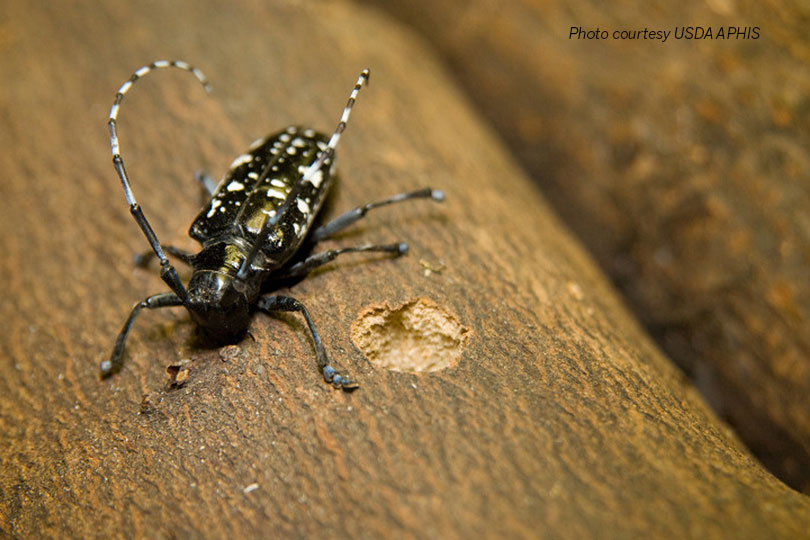By Jennifer Dorsett
Field Editor
Ten minutes is all it takes to check trees and help stop the spread of a damaging invasive pest in the U.S.
And according to the U.S. Department of Agriculture (USDA), August is the month to do so. Adult Asian longhorned beetles (ALB) emerge from trees around this time of year, so they’re easier to spot right now, leading USDA Animal and Plant Health Inspection Service (APHIS) to declare August as Tree Check Month.
APHIS encourages residents to protect their own trees and help eliminate ALB from the U.S.
“Just this past June, we confirmed a new infestation in South Carolina after a homeowner reported that they found a dead Asian longhorned beetle on their property,” said Josie Ryan, national operations manager for APHIS’ ALB Eradication Program. “We need the public’s help to find new areas where the beetle has spread, because finding it sooner means less trees will become infested.”
ALB is an invasive wood-boring beetle that attacks 12 types of hardwood trees in North America including maples, elms, horsechestnuts, birches and willows.
During its larval stage, according to APHIS, the insect feeds inside tree trunks and branches in the colder months. The beetle creates tunnels throughout the tree as it feeds, then chews its way out as an adult in the warmer months.
Infested trees will not recover and eventually die. These trees can also become safety hazards, since weak and dying trees drop branches or can fall over, especially during storms or high winds.
Signs that a tree might be infested include round exit holes in tree trunks and branches about the size of a dime or smaller or sawdust-like material, called “frass,” laying around the tree or in the branches.
Shallow oval or round scars in the bark could be sites adult beetles chewed to deposit their eggs, and dead branches or limbs falling from an otherwise healthy-looking tree are other indicators of ALB infestations.
The beetle has distinctive markings that are easy to recognize. The black and white antennae are longer than the insect’s body, which is shiny and black with white spots. The insects, which are about 1 to 1.5 inches long, have six legs and feet that can appear bluish in color.
The invasive insect is not harmful to people or pets, Ryan noted.
If a beetle is found, Ryan advises taking pictures, and if possible, capturing suspicious insects in a durable container and freezing them. Freezing specimens helps preserve the insect for identification.
Residents can report the insect or tree damage by calling the ALB hotline at 1.866.702.9938 or reporting it online here.
“As people use firewood this summer, we are also asking them to buy heat-treated and certified wood rather than move untreated firewood long distances, which can potentially spread ALB,” Ryan said. “You can also responsibly gather firewood where you will burn it or buy it in the area where you will use it.”
Firewood cannot move out of areas that are quarantined for ALB without a permit, she added.
It is important that people follow state and federal laws restricting the movement of woody material to keep the tree-killing pest from spreading outside of known infested areas.
USDA and its partners recently declared parts of New York City to be ALB-free, and the insect has also been eradicated from areas in Illinois, New Jersey, Massachusetts, other portions of New York and portions of Ohio.
Click here for more information about the ALB, other ways to keep it from spreading and eradication program activities.

